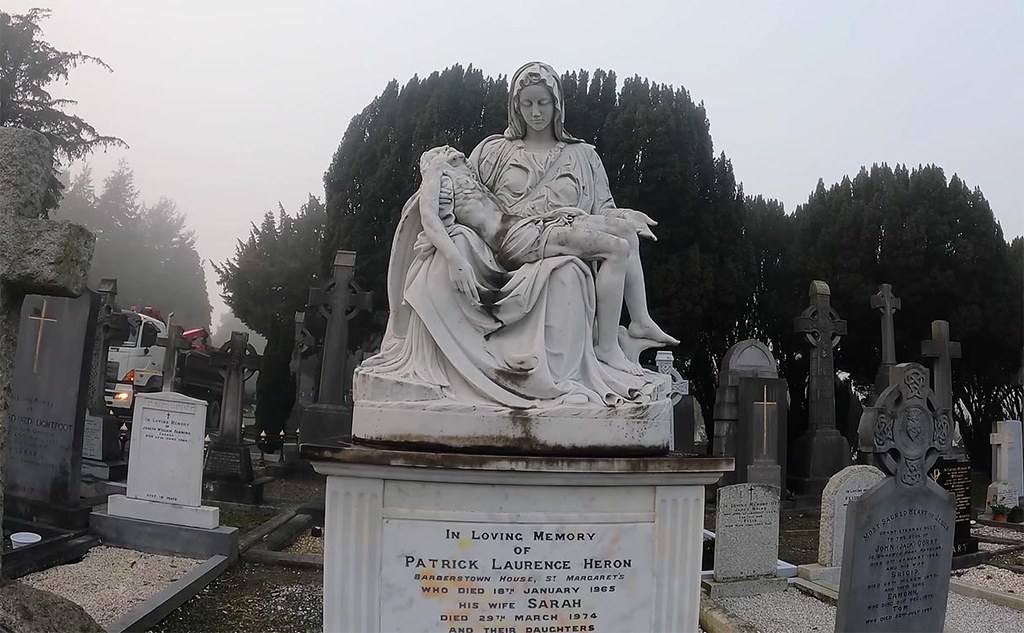Dublin: a walk int the mist through the tombs and crypts of the beautiful Glasnevin Cemetery
In the heart of the capital of Ireland there is a beautiful Victorian-style cemetery that was inaugurated in 1832: Glasnevin.
This cemetery has its origins in the discrimination suffered by Irish Catholics (a situation similar to that suffered by English Catholics) by Anglicans since the conquest of Ireland by Oliver Cromwell in 1649. The laws imposed by the British in Ireland discriminated against Catholics in various ways, including when it came to burying their dead, by not allowing them to perform Catholic ceremonies in cemeteries. This situation ended up provoking protests in 1823 by Irish Catholics.
As a result of these protests, the Irish politician Daniel O'Connell began a campaign to demand equal rights for Catholics (he also supported the same for Jews, then legally obliged to wear clothing that identified them as such). In 1828, O'Connell managed to be elected to the House of Commons, the lower house of the British Parliament, but being a Catholic, the law prevented him from holding his position. Fearing a rebellion in Ireland, then under British rule, King George IV signed an emancipation act in 1829 granting equal rights to Catholics.
As a result of that law, Glasnevin Cemetery was founded three years later in Dublin, although it was initially known as Prospect Cemetery, which was the village next to the cemetery. Initially it had an area of only 9 acres (3.64 hectares), but a terrible event forced it to be expanded: the Great Irish Famine (1845-1849) that killed more than a million people, which it was also accompanied by epidemics of typhoid fever, dysentery and cholera. As a result, some 800,000 people were buried in mass graves in Glasnevin. According to its official website, currently 1.5 million people rest in him, in an area of 124 acres (50 hectares).
Today Glasnevin is the home of famous Irishmen, including Daniel O'Connell, the nationalist leader Michael Collins, the second President of the Republic of Ireland Éamon de Valera and the writer Arthur Griffith. In January, the YouTube channel Dead Good Walks posted an interesting video taking a walk under the fog by the tombs and crypts of this cemetery:
You can see below some images of the video. Undoubtedly, the most striking monument in this cemetery is O'Connell's Tower, 55 meters high. It was built in 1855 in honor of Daniel O'Connell (died 1847). In 1971 it was damaged by a loyalist attack. Due to repair work, it was closed to the public until 2018.

In the churchyard there are many Celtic crosses (a Latin cross with a circle), a characteristic element of Irish funerary architecture.

An elegant mausoleum with Celtic-style decorations and a beautiful sculpture.

A sculpture of the Pietà on the grave of Patrick Laurence Heron, who died in 1965.

The area of the crypts. It is situated in a circular moat around O'Connell's Tower.

Elegant Celtic-style drawings on the tomb of Cardinal Edward MacCabe (1816-1885), Archbishop of Dublin.

|
Don't miss the news and content that interest you. Receive the free daily newsletter in your email: Click here to subscribe |
- Lo más leído
- A British fairytale ruin: the abandoned shoe house on the Isle of Wight
- The interior of the Statue of Liberty torch and the sabotage that canceled its visits
- The supermassive black hole of Phoenix A, the biggest known light-devouring monster
- A virtual tour of ancient Rome in full color, just as it was in its heyday
- The unknown Soviet female cosmonaut who died on a mission: history or hoax?
- A large collection of Volkswagen cars hidden in an abandoned mine in Switzerland
- An old Soviet military plane abandoned from 1971 on a Russian island near Alaska

 ES
ES





Opina sobre esta entrada: